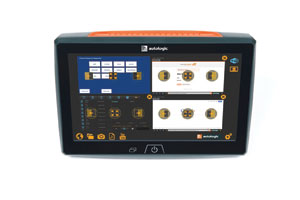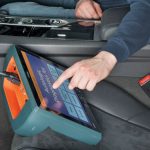Autologic explains how they work and why they go wrong.
In order to meet strict Euro 4/5 emission limits, modern diesels have to reduce gaseous and particulate emissions. To help them achieve this they use a particulate filter, of which there are two main types: ADPF and CDPF.
 ADPF (Additive Diesel Particulate Filter) is utilised by Ford, Volvo and Peugeot/Citroën and this uses an additive to help the regeneration process take place. An advantage of this is that it works at a lower temperature, however it does need replacing at around 75k miles as a service item due to the additive used.
ADPF (Additive Diesel Particulate Filter) is utilised by Ford, Volvo and Peugeot/Citroën and this uses an additive to help the regeneration process take place. An advantage of this is that it works at a lower temperature, however it does need replacing at around 75k miles as a service item due to the additive used.
CDPF (Catalysed Diesel Particulate Filter) is utilised by Jaguar, Land Rover, Audi, BMW and Mercedes. It uses a coated catalyst type DPF, which means it lasts longer (around 150k miles) as there is no additive to help the regeneration process. The major disadvantage is that it runs at a hotter temperature.
How does a CDPF work?
The exhaust gases pass through the filter, leaving any particulates behind that are too big to pass through the filter’s pores. As the filter fills with particulates, the engine management will access this and carry out a regeneration of the particulate filter to stop it blocking.
The engine management monitors the volume of the particulate in the filter by measuring the pressure in a pipeline before and after the particulate filter.
As the exhaust gas flows through the filter and the amount of particulate increases, the pressure difference will also increase. This will lead to a change in signal voltage from the pressure sensor. This signal is one of the parameters required before the regeneration can take place.
The particulate filter has two types of regeneration: passive and active.
Passive regeneration requires no special intervention from the engine management and occurs during normal engine operation. It happens when the DPF temperature reaches 250˚C (482˚F) and a continuous vehicle speed of above 40mph is maintained.
Active regeneration generally occurs every 450 miles (725km), although this is dependent on how the vehicle is driven. The DPF control software incorporates a mileage trigger, used as a back-up for active regeneration should it not start because of filter pressure. Active regeneration of the filter starts when the temperature is high enough to burn the particles. The filter temperature is increased by introducing post injection of fuel after normal operations have occurred. Depending on the filter temperature, the DPF software requests either one or two post injections of fuel.
T he first post injection of fuel retards the combustion inside the cylinder which increases the temperature of the exhaust gas. The second post injection of fuel is injected late in the power stroke cycle. The fuel partly combusts in the cylinder but some un-burnt fuel also passes into the exhaust where it creates an exothermic event in the filter, further raising the DPF temperature.
he first post injection of fuel retards the combustion inside the cylinder which increases the temperature of the exhaust gas. The second post injection of fuel is injected late in the power stroke cycle. The fuel partly combusts in the cylinder but some un-burnt fuel also passes into the exhaust where it creates an exothermic event in the filter, further raising the DPF temperature.
The active regeneration process takes around 20 minutes to complete. The first phase increases the filter temperature to 500˚C, while the second phase increases it to 600˚C. This temperature is maintained for 15-20 minutes to ensure complete incineration of the particles within the filter.
Forcing a regeneration The regeneration temperature of the filter is monitored by the DPF software to maintain the optimum temperature. If the regeneration process can’t take place due to vehicle usage or driving style, certain diagnostic equipment – such as Autologic’s AssistPlus – can force a regeneration to take place
To force a regeneration to take place using the AssistPlus tool, select “DPF functions” and then select “Diesel Particulate filter regeneration”. After selecting this option, on-screen instructions are displayed for the technician to follow. The procedure usually takes around 30 minutes to complete.
These AssistPlus screen shots show the forced regeneration – both in progress and completed.












